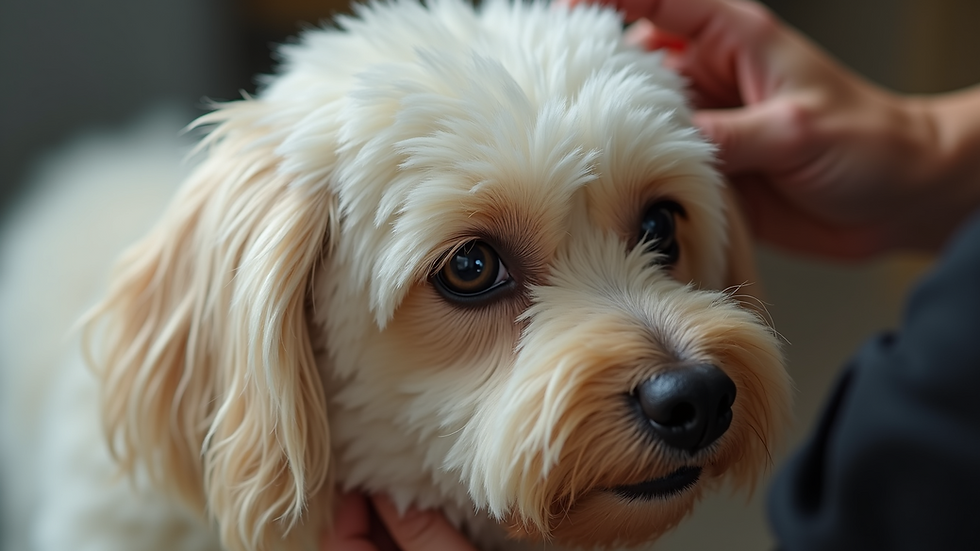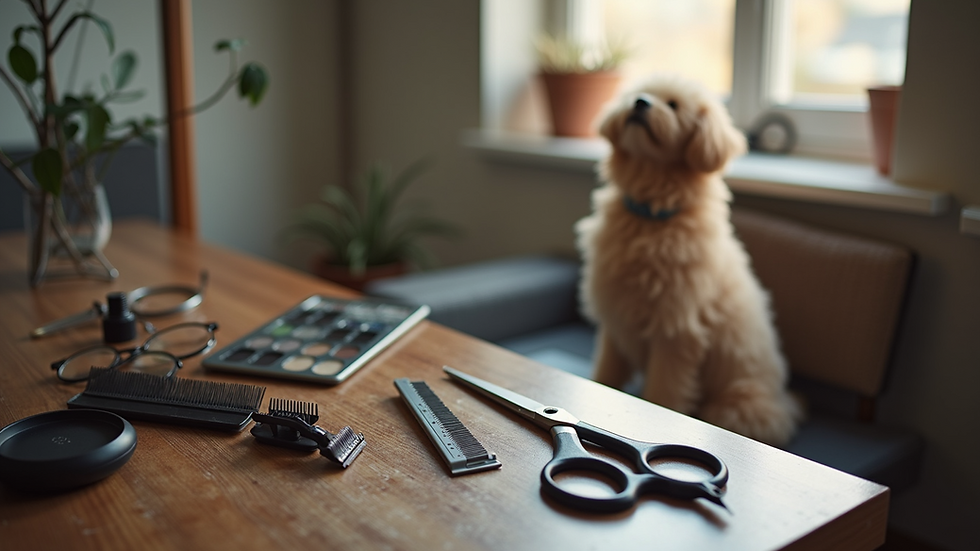How to Keep Pets' Coat Between Grooms
- estellapavlou5
- Mar 24
- 4 min read
Updated: Jun 3
As a pet owner, you want your furry friends to look and feel their best. A beautiful coat is a sign of overall health and happiness. While professional grooming services like Estella’s Pet Paradise are essential, there are several simple techniques you can employ to keep your pet's coat in top condition between grooming sessions.
Why Regular Grooming is Important
Grooming is not just about aesthetics—it's about maintaining your pet's health. Regular grooming helps prevent matting, reduces shedding, and keeps your pet's skin free from dirt and debris. If neglected, a pet's coat can turn into a tangled mess, which can lead to skin irritations or infections.
Benefits of a Well-Maintained Coat
A well-groomed pet enjoys several benefits:
Health Monitoring: Regular grooming allows you to inspect your pet for lumps, bumps, or skin issues.
Reduced Allergens: Brushing helps to eliminate dead hair and dander, thus reducing allergens in your home.
Bonding Time: Grooming is an excellent opportunity to bond with your pet. This makes it a pleasurable experience for both of you.

How Often Should You Groom Your Pet?
The frequency of grooming depends on your pet’s breed, coat type, and lifestyle. Here’s a quick guide to help you:
Short-Haired Breeds: These dogs typically require grooming every 4-6 weeks. Regular brushing once a week can help minimize shedding.
Medium-Haired Breeds: This coat often needs grooming every 6-8 weeks. Brush them at least twice a week to prevent tangles.
Long-Haired Breeds: These pets may require grooming every 4 weeks or more often. Daily brushing is ideal to keep their coat from matting.
Recognizing the Signs
Pet owners should be observant. If your pet’s coat starts to feel greasy or looks dull, it may be time for a grooming session. If your pet starts to scratch more often, it might indicate irritation or an issue with their coat.

Recommended Brushing Techniques
Brushing your pet’s coat is one of the best ways to keep it healthy. Here are some effective techniques:
1. Choose the Right Brush
Select a brush that suits your pet’s coat type:
Slicker Brush: Best for long-haired breeds to remove tangles and mats.
Bristle Brush: Ideal for short-haired breeds to remove loose hair and dirt.
Undercoat Rake: Great for thick-coated dogs to effectively remove loose undercoat hair.
2. Create a Routine
Establishing a grooming routine can make the process easier for both you and your pet. Choose a time when your pet is calm and relaxed. Aim for a specific day of the week to create consistency.
3. Use Gentle Strokes
Start brushing gently, especially if your pet has tangles or mats. Work from the ends of the hair towards the roots, and hold the base of the hair to avoid tugging on your pet's skin.

4. Pay Attention to Problem Areas
Focus on areas that are more prone to tangling, such as behind the ears, under the legs, and around the tail. Regular attention to these spots can prevent larger knots from forming.
Bathing Between Grooming Sessions
Bathing your pet at home can help keep their coat clean between professional grooming sessions. However, you should take care not to over-bathe. Frequent washing can strip away the natural oils from the coat.
Tips for Bathing Your Pet:
Choose the Right Shampoo: Use a pet-specific shampoo that suits your pet's skin type. Always avoid human shampoos, as they can be harsh on a pet’s sensitive skin.
Frequency: Most pets only need a bath every 2-3 months unless they roll in something particularly dirty or smelly.
Drying: Thoroughly dry your pet's coat after bathing to prevent them from getting cold. A blow dryer on a low, cool setting can help.
Maintaining a Healthy Diet
Nutrition plays a crucial role in the condition of your pet's coat. Feeding your pet high-quality food rich in Omega-3 fatty acids can enhance coat health.
Nutritional Supplements
Consider using supplements like fish oil or flaxseed oil, which can also improve skin and coat quality. Always consult your veterinarian before introducing any new supplements into your pet's diet.
Regular Check-Ins with Professionals
Although you can do much to maintain your pet's coat at home, don't overlook the importance of professional grooming. Regular check-ins can help detect any underlying health issues early.
Scheduling Grooming Appointments
Ensure you're scheduling regular grooming appointments at Estella’s Pet Paradise. This will keep your pet's coat in optimal condition and give your groomer the chance to spot any potential health issues.
Maintaining Hygiene
It's essential to keep not just the coat but your entire pet clean to prevent issues like bad odor or skin infections.
Ear and Eye Care
Regularly check your pet's ears and eyes for dirt or discharge. Cleaning their ears with vet-approved wipes can prevent infections and keep them feeling comfortable.
Nail Trimming
Keep your pet’s nails trimmed to promote healthy walking habits and reduce the risk of painful claws. Aim for a trim every month, or as often as required.
Conclusion: Why Grooming Matters
Taking the time to keep your pet’s coat in tip-top shape between grooming sessions is worth the effort. Not only does it enhance their appearance, but it also contributes to their overall health and well-being. For the best results, combine your at-home techniques with professional grooming services from Estella’s Pet Paradise. Your pet will thank you with happy tail wags, and you’ll benefit from a clean, healthy companion.



Comments